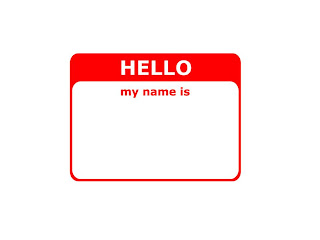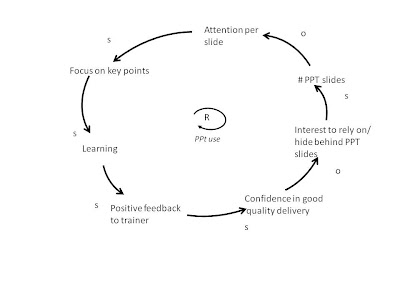 Just published by Fast Future is a study commissioned by the UK Government’s Science: So What? So Everything campaign on the Shape of Jobs to Come .
Just published by Fast Future is a study commissioned by the UK Government’s Science: So What? So Everything campaign on the Shape of Jobs to Come .
The study produced a list of 20 jobs for 2030, which I thought I would share because Rohit Talwar, from Fast Future, keynoted at the International Association of Facilitators European Conference in Oxford last September. His presentation, “Dancing in the Dark: The Future Business Environment”, thoughtfully provoked us all consider how we as facilitators might keep up with the game as the institutions we work with, and the profile of people in them, potentially change.
In that context, he had us imagine a participant group with, for example, age ranges fom 18-200. He questioned how will we structure our sessions, breaks, marketing, preparation, when everyone has global internet exposure and is hyperconnected? How will we work in an extremely resource constrained world – green our events, dramatically reduce costs, save time? When there is incredible ethnic as well as other diversity in the room, how will we celebrate that as well as continually work on issues of difference and potentially tolerance? And so on. For some, parts of this future are already here.
I received this list of future jobs this morning and blogged it because I thought it was interesting to consider how facilitators and learning practitioners might flex methods now for working with all kinds of change in the future (whether it is with body part makers or not!):
The Shape of Jobs to Come list of 20 future Jobs in 2030 (taken directly from their list published on the links above today):
1. Body part maker: Advances in science will make the creation of body parts possible, requiring body part makers, body part stores and body part repair shops.
2. Nano-medic: Advances in nanotechnology offer the potential for a range of sub-atomic ‘nanoscale’ devices, inserts and procedures that could transform personal healthcare. A new range of nano-medicine specialists will be required to administer these treatments.
3. ‘Pharmer’ of genetically engineered crops and livestock: New-age farmers could be raising crops and livestock that have been genetically engineered to improve yields and produce therapeutic proteins. Possibilities include a vaccine-carrying tomato and therapeutic milk from cows, sheep and goats.
4. Old age wellness manager/consultant: Specialists will draw on a range of medical, pharmaceutical, prosthetic, psychiatric, natural and fitness solutions to help manage the various health and personal needs of the ageing population.
5. Memory augmentation surgeon: Surgeons will add extra memory capacity to people who want to increase their memory capacity. They will also help those who have been over-exposed to information in the course of their life and simply can no longer take on any more information thus leading to sensory shutdown.
6. ‘New science’ ethicist: As scientific advances accelerate in new and emerging fields such as cloning, proteomics and nanotechnology, a new breed of ethicist may be required, who understands a range of underlying scientific fields and helps society make consistent choices about what developments to allow. Much of science will not be a question of can we, but should we.
7. Space pilots, tour guides and architects: With Virgin Galactic and others pioneering space tourism, space trained pilots and tour guides will be needed, as well as designers to enable the habitation of space and other planets. Current projects at SICSA (University of Houston) include a greenhouse on Mars, lunar outposts and space exploration vehicles.
8. Vertical farmers: There is growing interest in the concept of city-based vertical farms, with hydroponically-fed food being grown in multi-storey buildings. These offer the potential to dramatically increase farm yield and reduce environmental degradation. The managers of such entities will require expertise in a range of scientific disciplines, as well as engineering and commerce.
9. Climate change reversal specialist: As the threats and impacts of climate change increase, a new breed of engineer-scientists will be required to help reduce or reverse the effects of climate change on particular locations. They will need to apply multi-disciplinary solutions ranging from filling the oceans with iron filings, to erecting giant umbrellas that deflect the sun’s rays.
10. Quarantine enforcer: If a deadly virus starts spreading rapidly, few countries, and few people, will be prepared. Nurses will be in short supply. Moreover, as mortality rates rise, and neighbourhoods are shut down, someone will have to guard the gates.
11. Weather modification police: The act of seeding clouds to create rain is already happening in some parts of the world, and is altering weather patterns thousands of miles away. Weather modification police will need to control and monitor who is allowed to shoot rockets containing silver iodine into the air – a way to provoke rainfall from passing clouds.
12. Virtual lawyer: As more and more of our daily life goes online, specialists will be required to resolve legal disputes which could involve citizens resident in different legal jurisdictions.
13. Avatar manager / Devotees Virtual teacher: Avatars could be used to support or even replace teachers in the elementary classroom, for instance, as computer personas that serve as personal interactive guides. The Devotee is the human that makes sure that the Avatar and the student are properly matched and engaged, etc.
14. Alternative vehicle developers: Designers and builders will create the next generation of vehicle transport using alternative materials and fuels. Could the dream of underwater and flying cars become a reality within the next two decades?
15. Narrowcasters: As broadcasting media becomes increasingly personalised, roles will emerge for specialists working with content providers and advertisers to create content tailored to individual needs. While mass market customisation solutions may be automated, premium rate narrowcasting could be performed by humans.
16. Waste data handler: Specialists will provide a secure data disposal service for those who do not want to be tracked, electronically or otherwise.
17. Virtual clutter organiser: Specialists will help us organise our electronic lives. Clutter management would include effective handling of email, ensuring orderly storage of data, management of electronic IDs and rationalising the applications we use.
18. Time broker / Time bank trader: Alternative currencies will evolve their own markets – for example time banking already exists.
19. Social ‘networking’ worker: Social workers will help those in some way traumatised or marginalised by social networking.
20. Personal branders: An extension of the role played by executive coaches giving advice on how to create a personal ‘brand’ using social and other media. What personality are you projecting via your blog, Twitter, etc? What personal values do you want to build into your image – and is your image consistent with your real life persona and your goals?
Whether you agree with this list or not, it is still interesting to consider how things change (both with the people and the context) as a learning practitioner and facilitator, and consider how you notice this, and how you adapt your practice to work with it.















 This morning I went to an interesting Writer’s workshop on publishing – it ran the gamut from traditional book publication to online self-publishing. It reminded me of some of the things that I had learned doing this myself, which I had never recorded. So before I forget, I thought I would blog this experience for my own future reference, and anyone else interested…
This morning I went to an interesting Writer’s workshop on publishing – it ran the gamut from traditional book publication to online self-publishing. It reminded me of some of the things that I had learned doing this myself, which I had never recorded. So before I forget, I thought I would blog this experience for my own future reference, and anyone else interested…








 8. Test it: Who is the authority who will announce the winner? If appropriate, do you have on hand the “suggested answers” and someone who can explain them?
8. Test it: Who is the authority who will announce the winner? If appropriate, do you have on hand the “suggested answers” and someone who can explain them?









